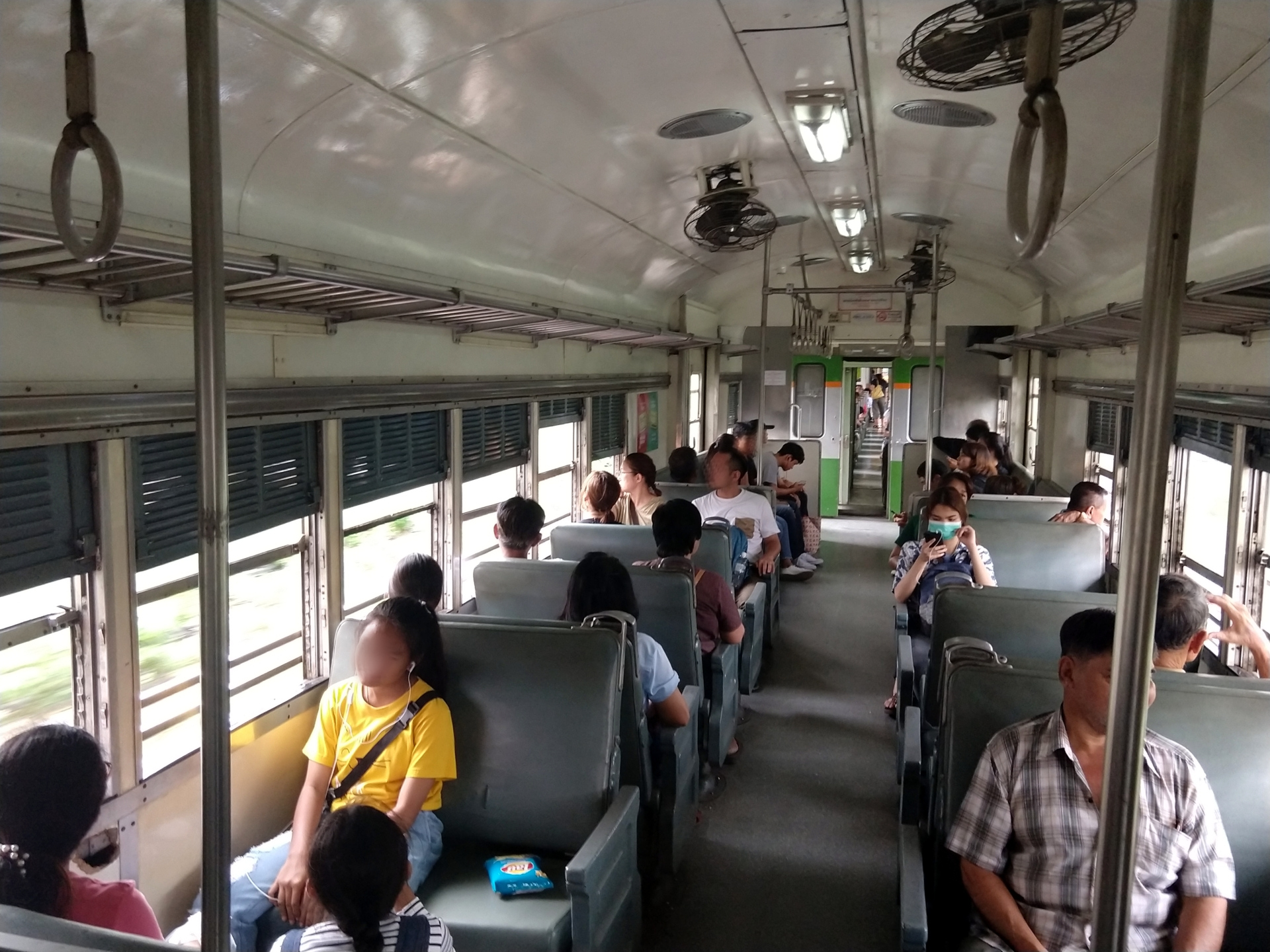"Huamak station. This is Train 428 heading towards Bangkok. Please make sure you do not leave your belongings behind."
The announcement above probably reminds you of a ride on the ICE train from Berlin to Paris you took with your parents and sister, but what if I were to tell you that the train I'm on when I heard that (of course in Thai, the native language here) is often used for commuting, stops at stations 3km apart, and has no seat assignments on the ticket?
Welcome to the SRT commuter train.
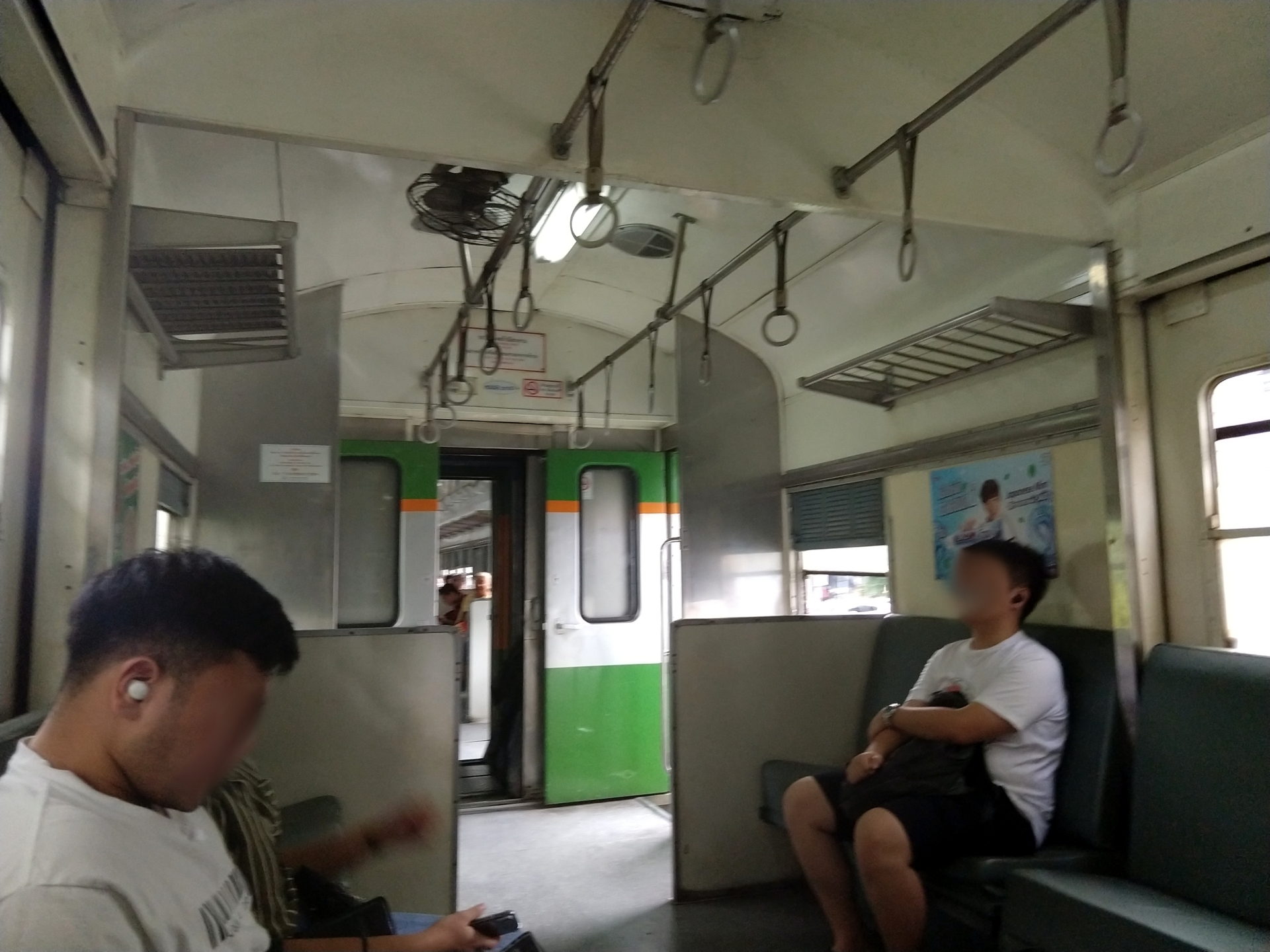
The transit network that runs on long-distance rails
There are both people who need to travel very far and those who had to go somewhere specific, so long distance railways are divided into multiple "types" curiously sharing the same set of two (or in some areas even one) rails. There are the hyperexpress trains, which only park in major cities and has a sleeper cabin great for a comfortable overnight to Chiangmai, and the "express" trains which stop at every province.
Slowest of all, there is the "commuter" train, which is the one I boarded. This only goes out to the suburbs, but stops every 3 kilometers on average.
Queer, but practical
The trip starts with me walking to the station, finding the ticket counter, telling the friendly staff member what station you’re going to, then waiting for a train. But instead of being underground with AC units cooling the place, this is what the station looks like:
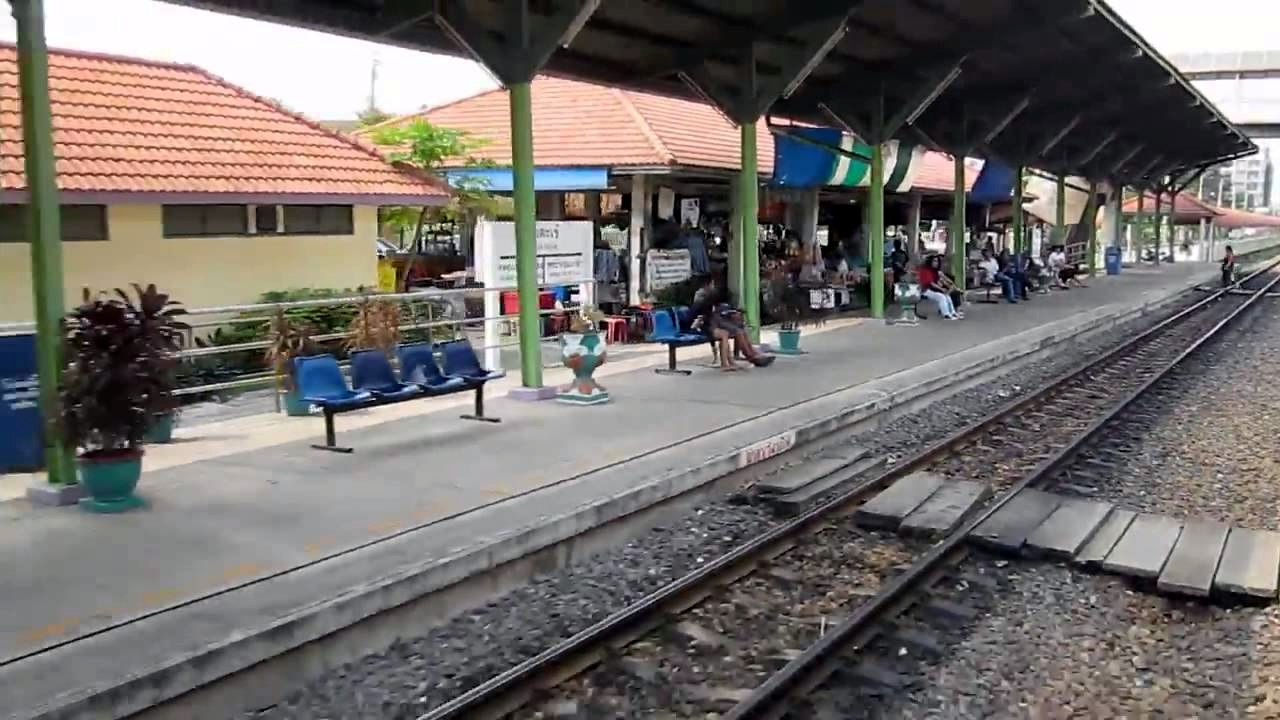
and we’re boarding a car chugged along by a Diesel engine instead of motors powered by electric lines overhead or in a third rail.
Once we’re on the train, though, it feels just like hopping on the Underground. There are seats to the sides with handles for those who would rather stand. (Of course, because the carriage is also used for cheap longer-distance travel, there are sets of four seats arranged like in a restaurant available in the middle of the car.) We have a timetable listing when a train will arrive, but with serious repercussions for being late because one comes only every hour or so. Instead of announcements coming from speakers dotted over the cabin, stations big enough to have a ticket office greet arriving trains with announcements on the megaphone by the friendly staff. Instead of sensors detecting those pesky people who love to hop on the train when the doors are already closing on them, we have literal green flags woven by police officers to indicate the “all clear”. Instead of TV adverts blaring over the speakers, we have the infrequent posters on the walls. And of course, instead of AC units cooling us down in the summer heat, the train has fans throughout, none of which were on when I was riding the train.
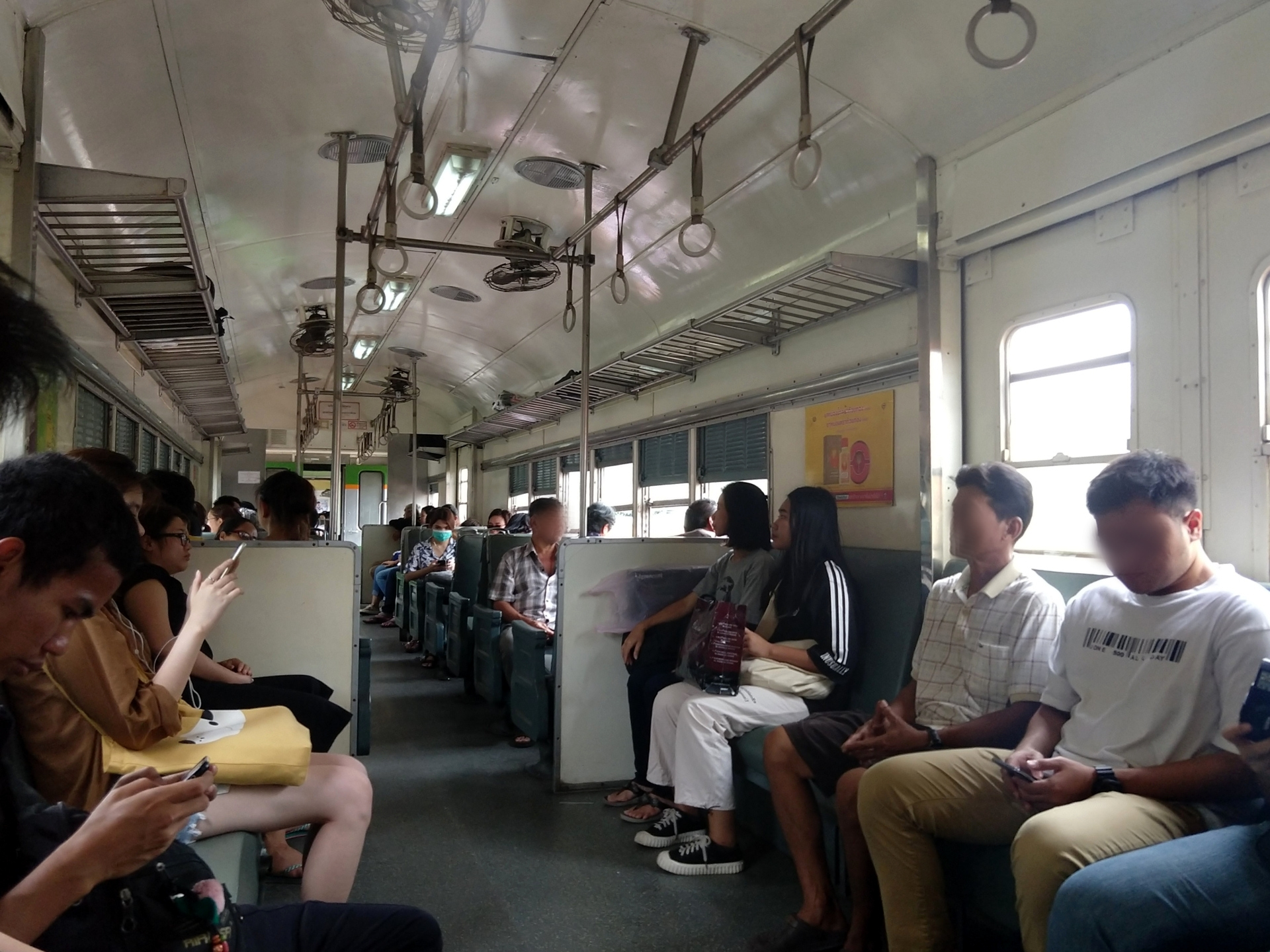
Some stations are even cheaper. Asoke stop is nothing more than a bunch of concrete planks put down next to a road-railroad crossing, a sign indicating the stop name, and the trains stopping. And how do you pay for your trip? You can simply buy your ticket from the ticket collector! Nevertheless, the station is actually a very convenient transfer stop to Petchburi MRT, and is used by a large number of people.
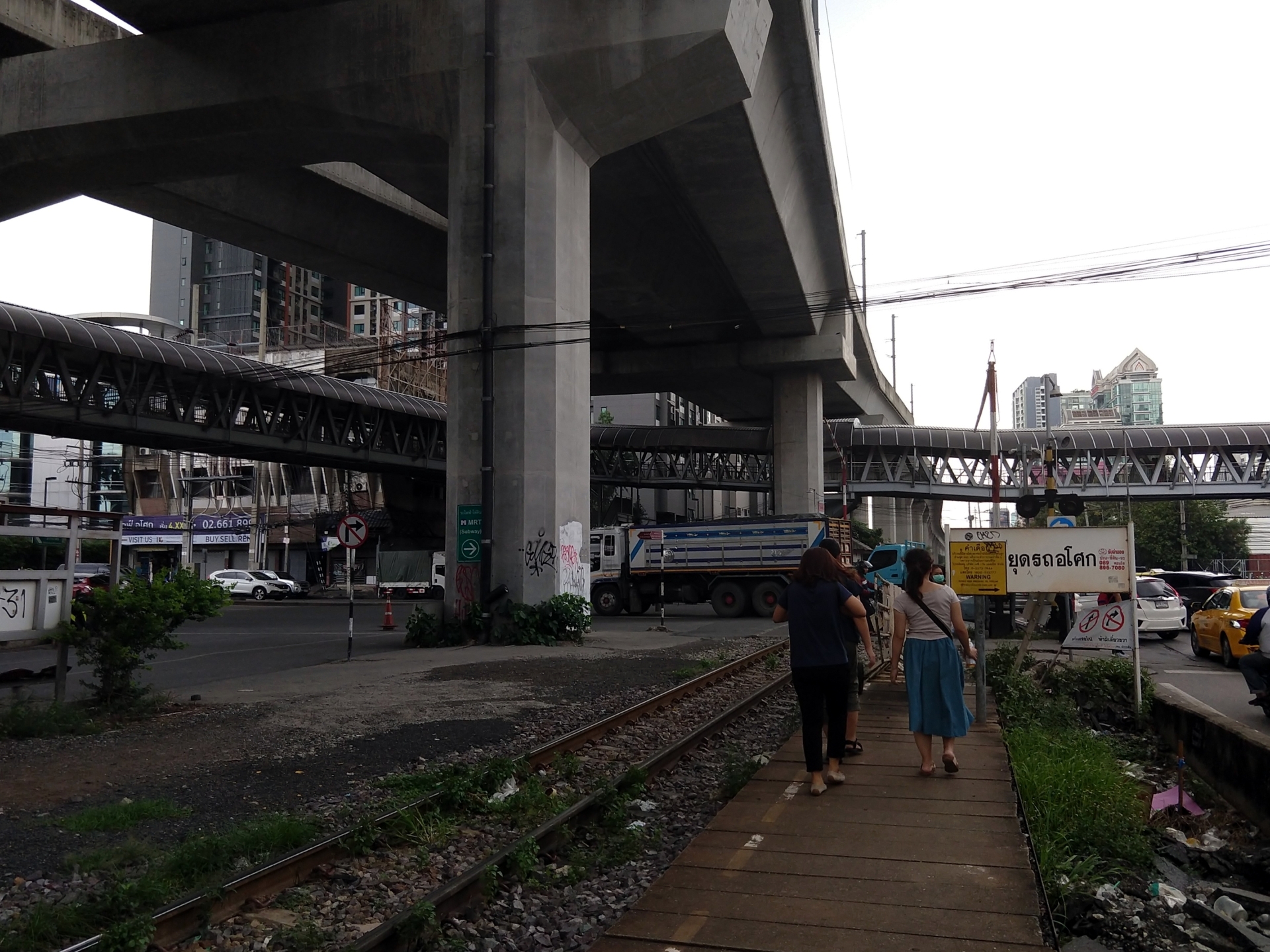
Red Dreams
The commuter train system may seem quaint, but for the students at KMITL and other people who use it regularly, it has served its function as a commuting service. But times have changed, maybe, and most people are looking for trains that run on electricity, has air conditioning, and looks, well, “developed”.
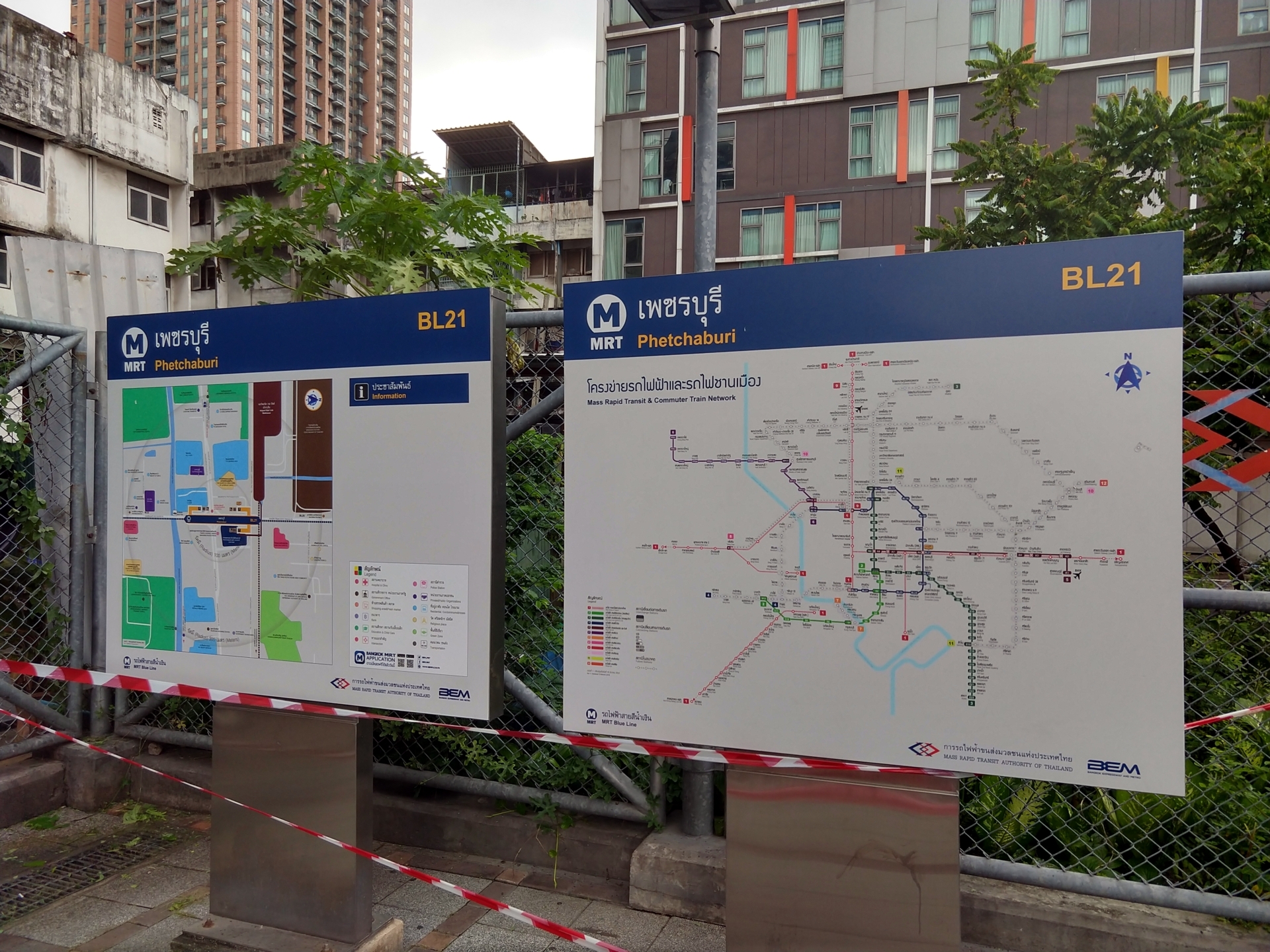
SRT is planning to replace the old commuter rail system with a modern metro solution - the red and maroon lines. This will follow the route of the old train lines, but be elevated. Long-distance trains will continue to run on ground level, and multiple stations will be rebuilt to modern styling to accommodate both long-distance and the new commuter train.
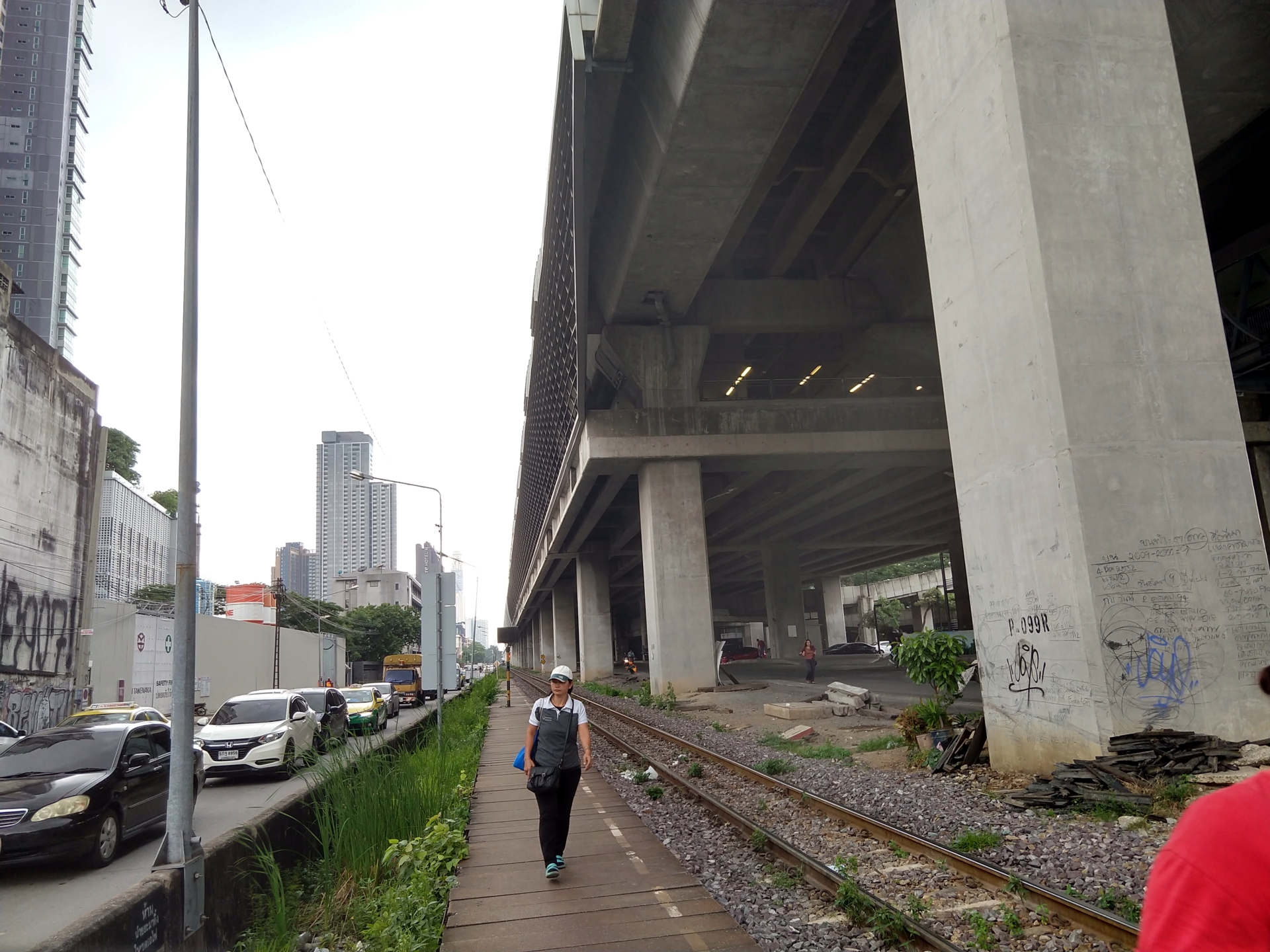
This won’t be the first metro endeavour for SRT - the infamous Airport Rail Link similarly follows the existing rail line with a new elevated track. While the ARL does have numerous reliability, maintenance, and situational agility problems, I still have hope that the new commuter lines will work as expected.
What they won't have, however, is the pure queerness and efficiency that the system provides. My 24km ride on the commuter train only cost me ฿5 - a similar trip on the ARL will rack up about ฿40 (not to mention the ARL’s reliability woes means some people have already switched to the commuter trains for their commute!). And while I wouldn’t recommend tourists to take the commuter train (You really need a good command of Thai in order to be able to do much of anything) or the non-Blue Chao Praya express boats, it does something that the more modern metro lines cannot - be accessible to everyone.
Old idea, New masks
Ultimately, writing this blog post made me realize something - we have been able to commute to work on public transport for decades; the methods we use simply change over time. While the commuter train ride feels both ancient and exciting at the same time, it also struck me as oddly familiar.
Yes, I know I often get sentimental like this when travelling abroad as well (which might sound idiosyncratic, what’s great about going abroad but being fascinated? I often get intrigued in more subtle but profound manners than that.), but it’s interesting nonetheless. And sure, you don’t get to cool yourself off like you can do on the BTS, but at the end of the day, isn’t the purpose of it all getting to work before your shift starts? Be it the BTS, the ARL, the Chao Praya express boat, or the SRT commuter train, they all take you to your destination. Which one you pick, really, depends on where they go to, what do you expect out of your commuting method, and how much you can afford.
But these quaint systems are somehow more notable to me. I’m pretty sure a lot of you Farangs think we just eat Tom Yam Kung on as many days as we could, but you will be surprised at how Basil fried rice is basically the Fish n’ Chips of our country. The burger restaurant that every review book mentions is just that - some famous burger restaurant. But that little fusion outlet you found an ad for while walking back to the department store, decided to try out of curiosity, and walk out feeling delighted by the delectable dishes? That’s the thing you really need to write home about.
